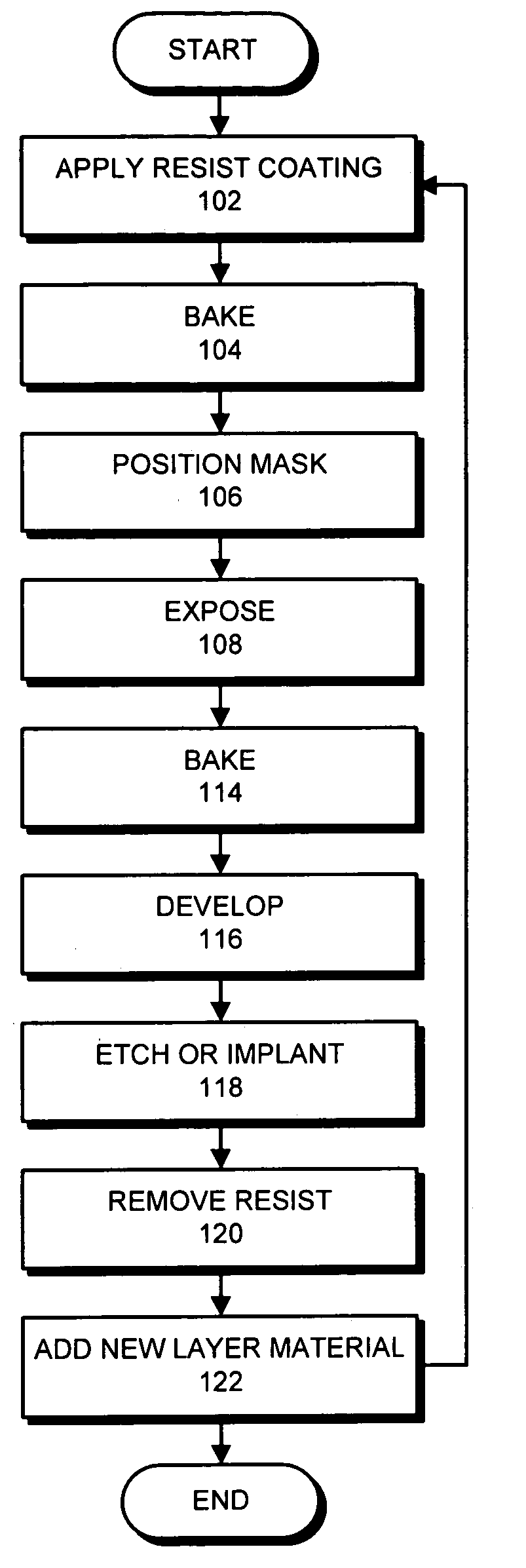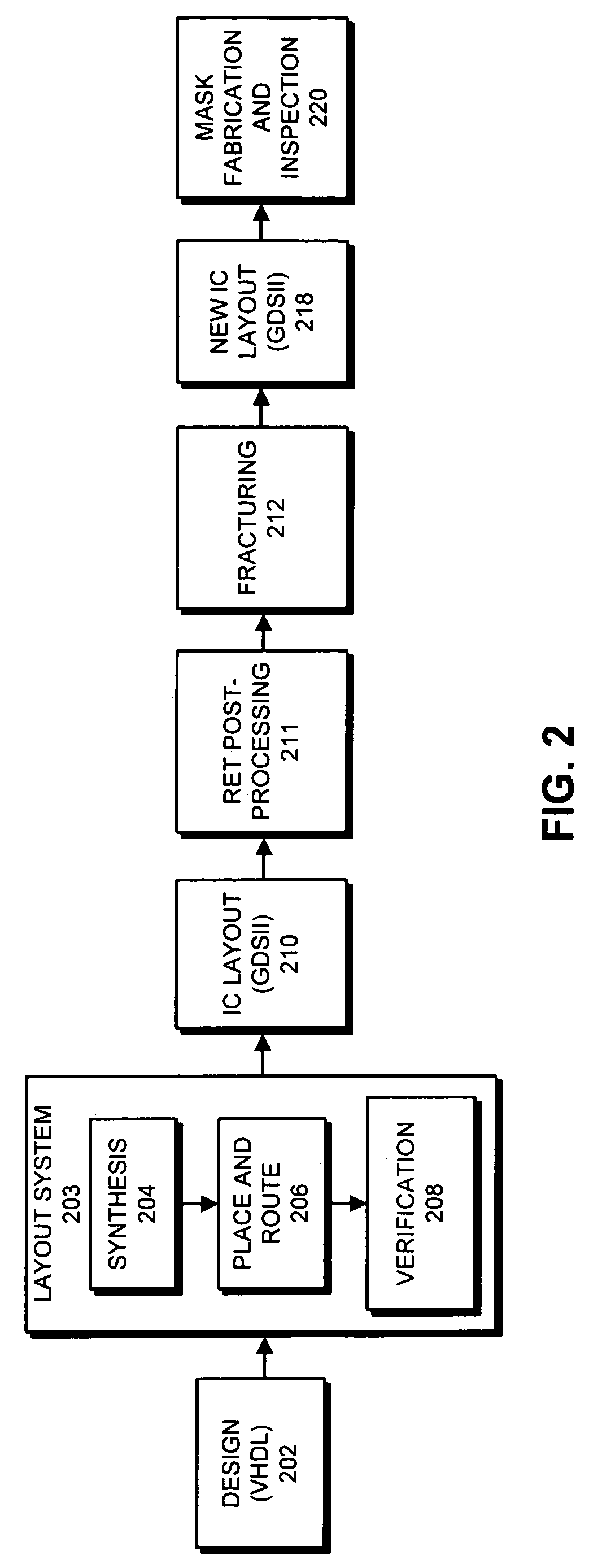Method and apparatus for generating an OPC segmentation based on modeled intensity gradients
a technology of intensity gradient and intensity gradient, which is applied in the direction of photomechanical equipment, instruments, originals for photomechanical treatment, etc., can solve the problems of data volume explosion, unfavorable data volume maintenance, and progressively harder to deal with optical effects that arise, so as to maintain or reduce data volume, maintain correction accuracy, and “cost-effective” shape
- Summary
- Abstract
- Description
- Claims
- Application Information
AI Technical Summary
Benefits of technology
Problems solved by technology
Method used
Image
Examples
Embodiment Construction
[0034]The masks described in this specification are used during the process of manufacturing an integrated circuit. More specifically, FIG. 1 presents a flow chart illustrating the wafer fabrication process in accordance with an embodiment of the invention. The system starts by applying a photoresist layer to the top surface of a wafer (step 102). Next, the system bakes the photoresist layer (step 104). The system then positions a mask over the photoresist layer (step 106), and exposes the photoresist layer through the mask (step 108). In some embodiments, multiple masks and / or exposures may be used in steps 106 and 108. Next, the system optionally bakes the wafer again (step 114) before developing the photoresist layer (step 116). Next, either a chemical etching or ion implantation step takes place (step 118) before the photoresist layer is removed (step 120). (Note that in the case of a lift-off process, a deposition can take place.) Finally, a new layer of material can be added a...
PUM
| Property | Measurement | Unit |
|---|---|---|
| wavelength | aaaaa | aaaaa |
| wavelength | aaaaa | aaaaa |
| wavelength | aaaaa | aaaaa |
Abstract
Description
Claims
Application Information
 Login to View More
Login to View More - R&D
- Intellectual Property
- Life Sciences
- Materials
- Tech Scout
- Unparalleled Data Quality
- Higher Quality Content
- 60% Fewer Hallucinations
Browse by: Latest US Patents, China's latest patents, Technical Efficacy Thesaurus, Application Domain, Technology Topic, Popular Technical Reports.
© 2025 PatSnap. All rights reserved.Legal|Privacy policy|Modern Slavery Act Transparency Statement|Sitemap|About US| Contact US: help@patsnap.com



